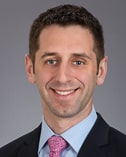
For an institutional buy-side trading desk, what is the upshot of integrating the order management system with the execution management system?
It’s not just about consolidating acronyms, from OMS plus EMS to OEMS. Rather, there are practical, bottom-line considerations pertaining to efficiency and streamlining workflow. In the simplest form, it’s about freeing up traders to trade without being constrained by disparate technological systems that don’t mesh with each other — improving the workflow between the trader and the portfolio manager so both can focus on generating alpha, or excess investment return.

John Adam, FactSet
“Now more than ever, you need to get as many functions as possible from the vendor that is best for you in terms of orders, executions, compliance, risk, and portfolio,” said John Adam, SVP, Portfolio Management & Trading Solutions at FactSet Research Systems. “But if there is a best-of-breed component from another vendor that makes sense to integrate, you have to be able to bring it in, set it up to message properly, and get it everything it needs for inputs and outputs. That’s the ‘killer’ workflow—regardless the number of vendors, it’s about giving a client the sense that their stack ‘just works’.”
Challenges for buy-side traders in today’s complex electronic markets are well-documented: liquidity-sourcing difficulties, a diminishment of capabilities on the sell side, a higher bar for compliance and regulation, and reduced IT spend.
A single vendor providing a soup-to-nuts offering — from pre-trade risk to execution to post-trade analytics, and everything in between — is the ideal. But that is generally not feasible for the largest institutional desks that need a comprehensive suite of specialized offerings across asset classes—or even just to mitigate risk by spreading their technology investments and building in redundancies. The focus now becomes working smarter with different systems.
“This is much easier said than done, especially for a more complex asset manager that might be trading bespoke OTC products alongside exchange-traded futures and cash OTC products,” said Kevin McPartland, head of market structure and technology research at Greenwich Associates. “They’re all very different markets, with different dynamics and different needs for collateral and clearing and everything else.”
“Ultimately, the head of trading across all products should be able to get a single view of the desk, across the assets of the portfolio,” McPartland said. “You can manage risks better if you only need one downstream workflow. Streamlining that is not easy, but it is very beneficial to have a single view of the world with a normalized data set.”

Kevin McPartland, Greenwich Associates
The best EMSs and OMSs are not only best at what they do, but they are also open systems that readily integrate with a desk’s existing technology stack. This compatibility makes traders’ lives easier, which flows down to the bottom line.
“For an institutional asset manager, one way to reduce the cost profile is by lowering the cost of the implementation of the investment idea, with a killer workflow where everything talks to everything down the chain,” said Adam. “I can handle more order volume with the same number of humans. My operational costs per trade are lower, and my people can have laser-like focus on more interesting work, while allowing the machines to handle mundane, liquid trades on average trading days.”





